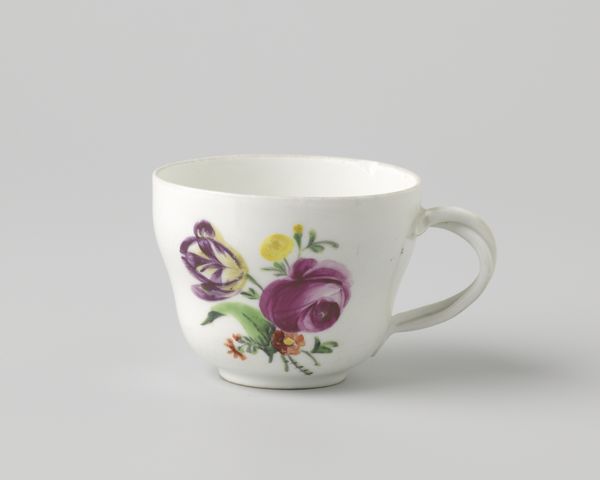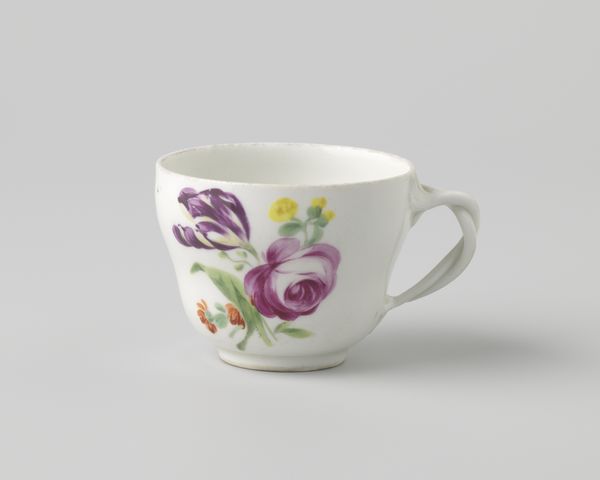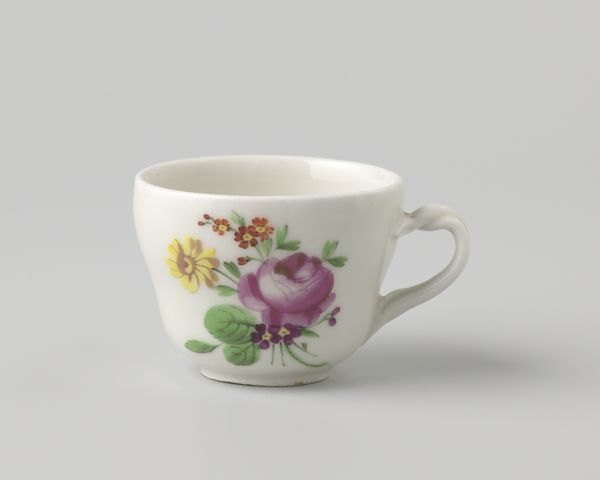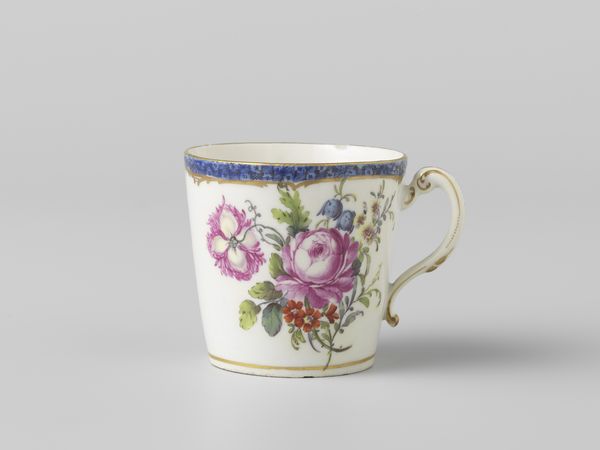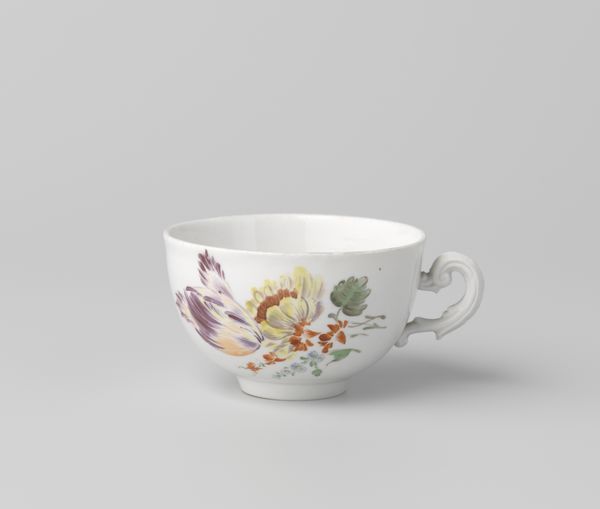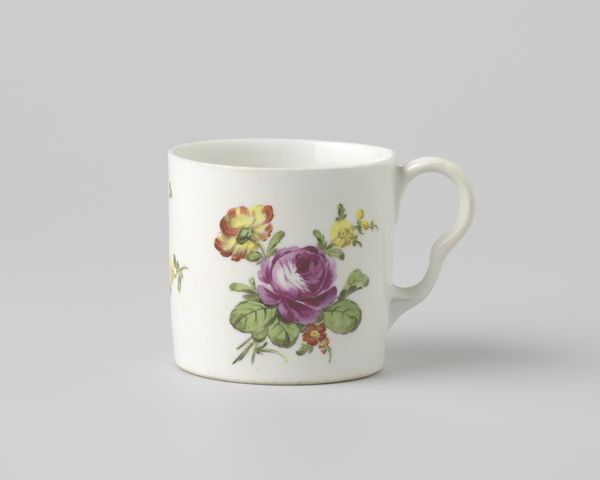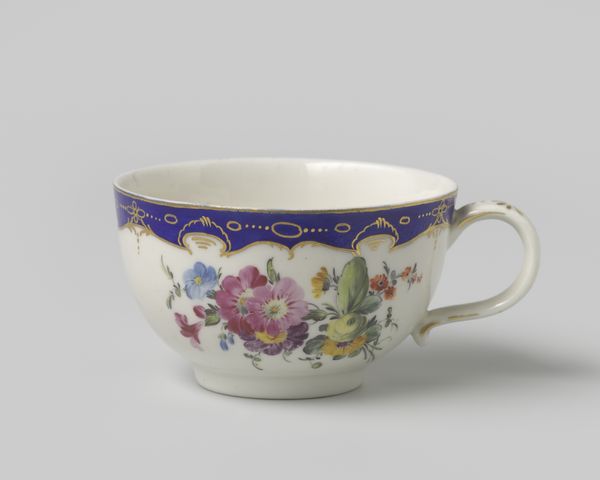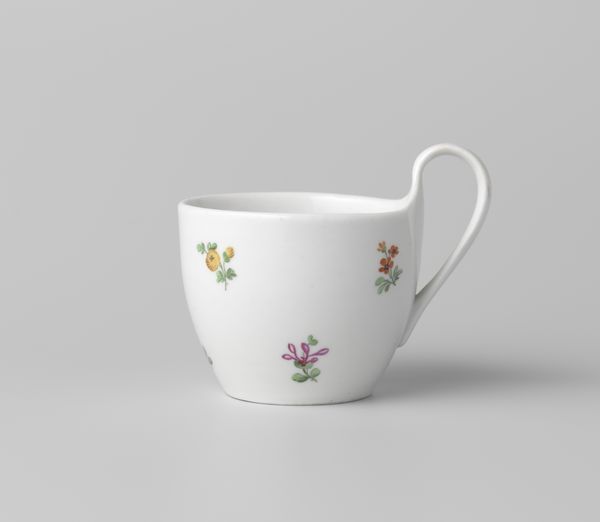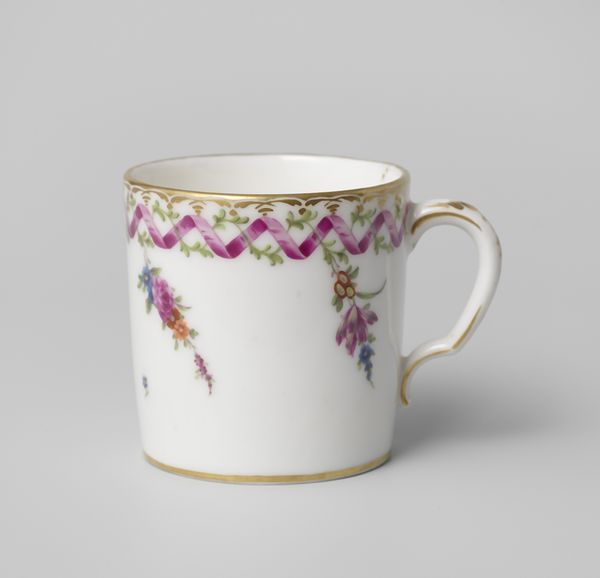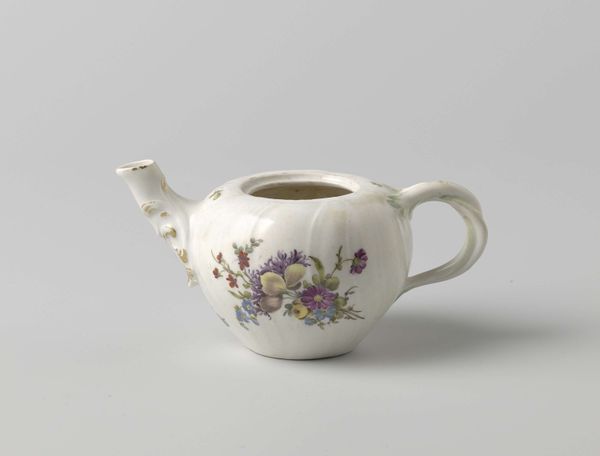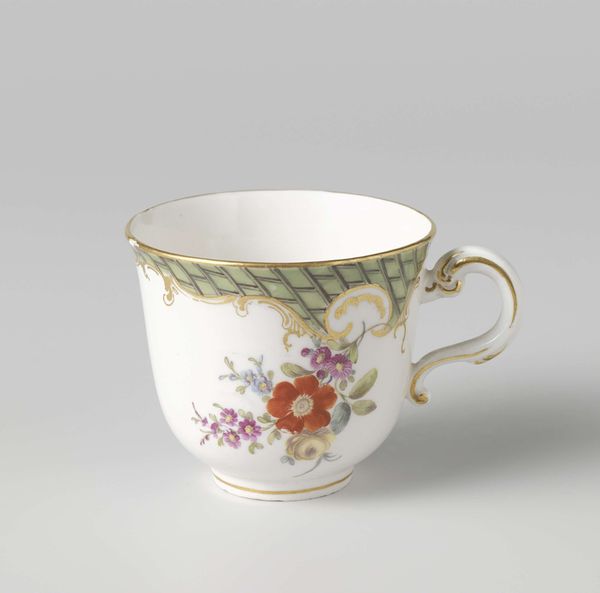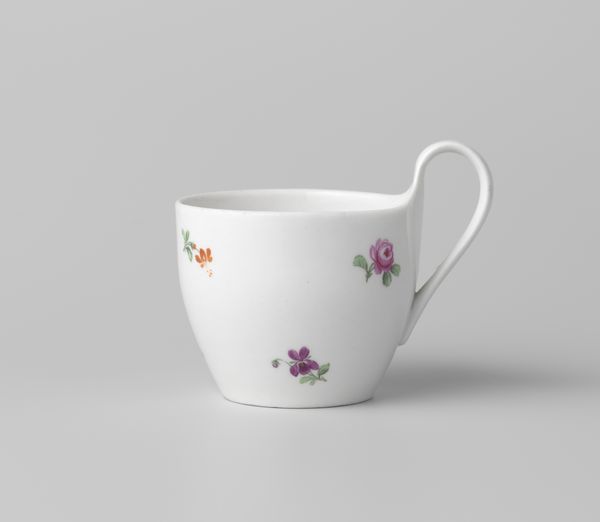
painting, ceramic, porcelain
#
still-life-photography
#
painting
#
ceramic
#
porcelain
#
romanticism
#
decorative-art
Dimensions: height 5.5 cm, diameter 6.8 cm, diameter 3.4 cm, width 8.7 cm
Copyright: Rijks Museum: Open Domain
Curator: Isn't it precious? A delicate porcelain cup from the early 19th century, circa 1800-1849, adorned with a bouquet of flowers. They call it "Cup with a bouquet and flower sprays" and it was crafted by the Kaiserliche Porzellanmanufaktur. Editor: It is! Almost painfully so. There’s something so fragile and…contained about it. Like a secret garden trapped on a teacup. The floral painting almost vibrates against that stark white porcelain. Curator: Indeed. The craftsmanship is remarkable, especially when one considers the historical context. During this era, porcelain like this was as much a statement of wealth and refinement as it was a functional object. These floral motifs weren't merely decorative; they often carried symbolic weight. Editor: It's like the person who owned this saw it as more than something to drink from, that the cup served as some reminder of an aesthetic appreciation. Did owning this give the owner some sense of status when displaying this, drinking from it in front of other people? Curator: Without a doubt. The ritual of drinking tea or coffee from such a cup became a display of social grace and cultural capital. Remember, this was an age defined by Romanticism, where an idealized view of nature was everywhere from poetry to painting. The delicate flowers resonate with that sentiment, bringing a touch of idealized nature into domestic life. Editor: The detail in the roses is almost hyper-realistic. You can almost smell their scent and feel the softness of their petals, a beautiful contrast to the stark, almost austere, cup. There's tension there, right? A yearning for softness in a hard, gilded age. Curator: Precisely. The artists and artisans employed at the Kaiserliche Porzellanmanufaktur were not just craftsmen; they were tastemakers, influencing ideas about beauty, nature, and the very concept of 'good taste' through objects like these. Editor: So more than just decoration; these objects became little propaganda machines for Romanticism! It's remarkable how something so seemingly innocuous like a floral design on a teacup could reflect broader socio-political trends. Thinking of the politics embedded within aesthetics, well, I can no longer sip my tea the same. Curator: I feel like after contemplating the journey from clay to decorative art that I appreciate a certain simplicity it has; like seeing art at it's basic form! Editor: Agreed. It's a tiny treasure that holds more stories than you’d imagine.
Comments
No comments
Be the first to comment and join the conversation on the ultimate creative platform.
